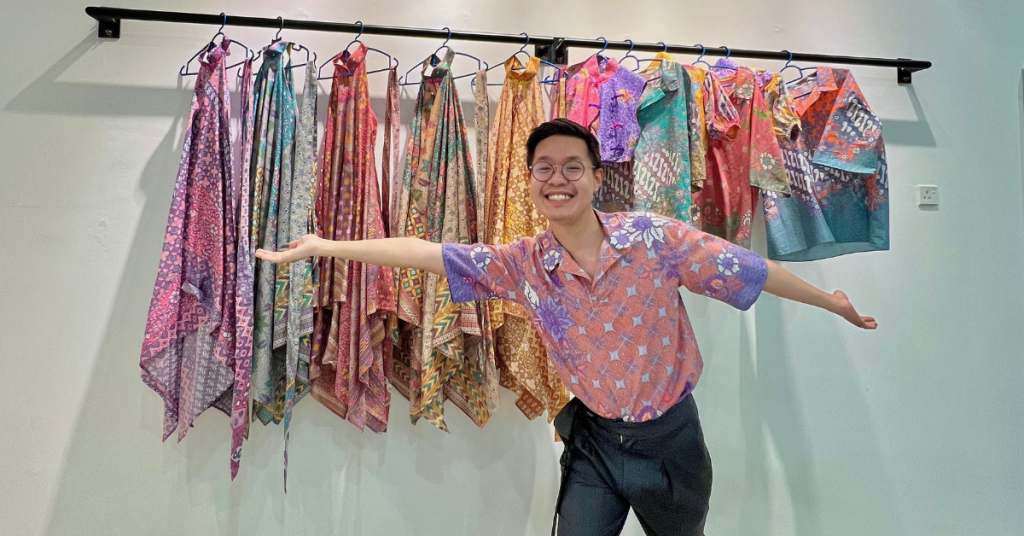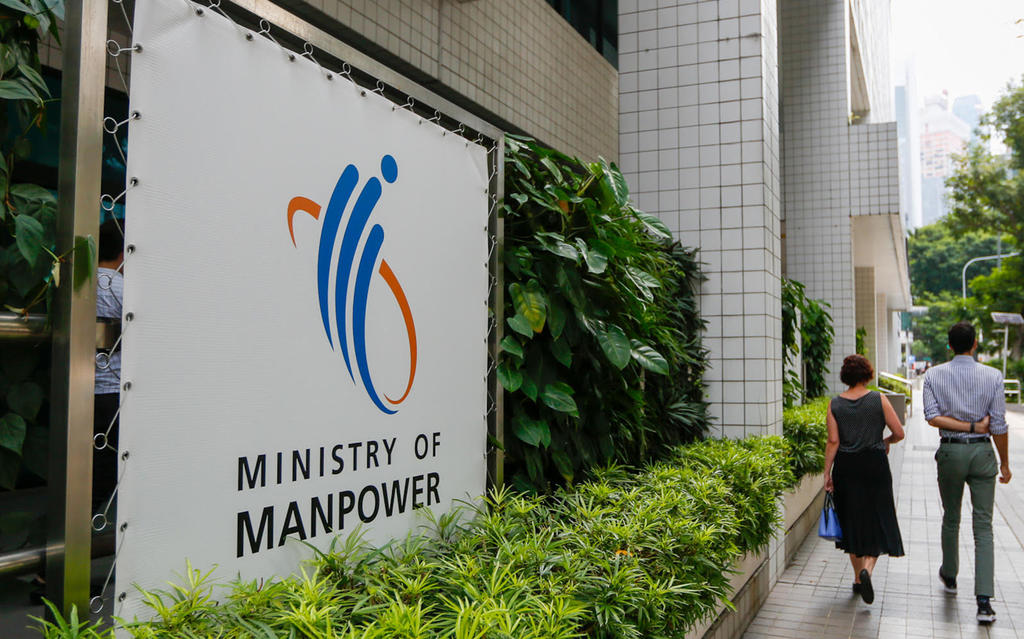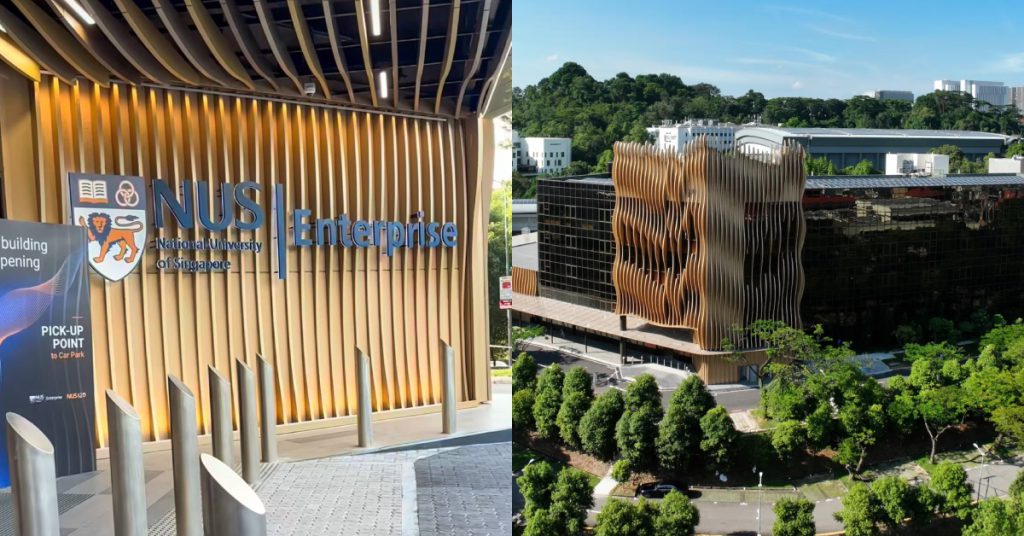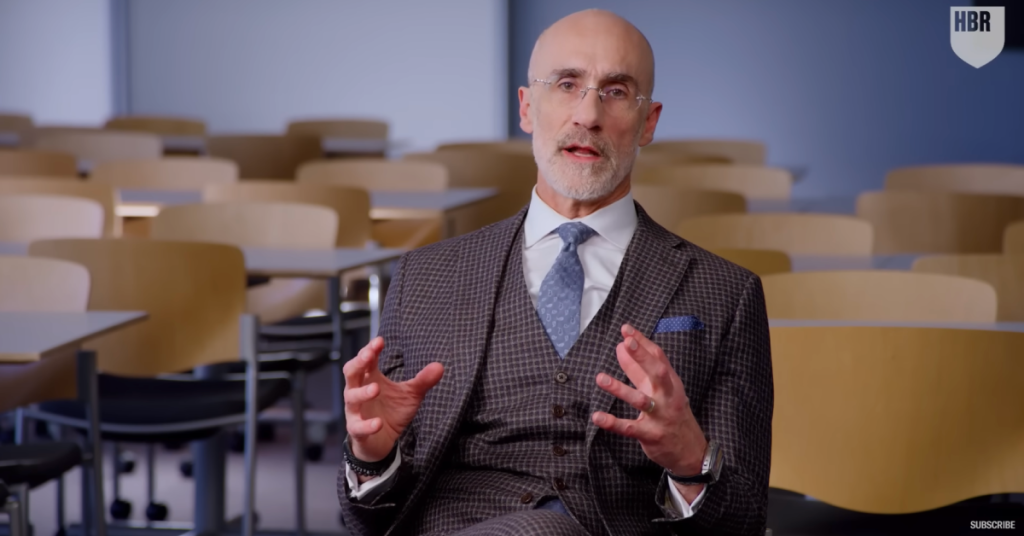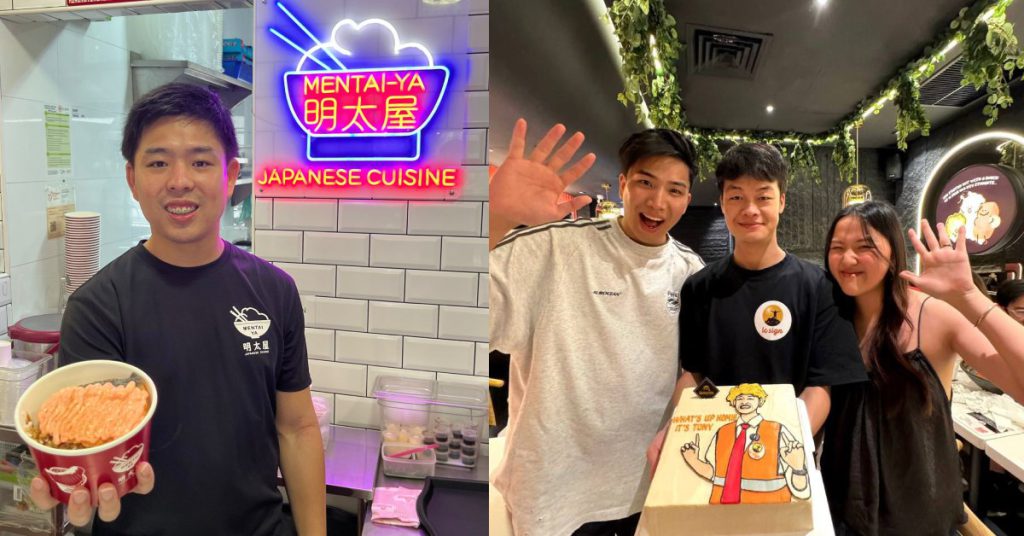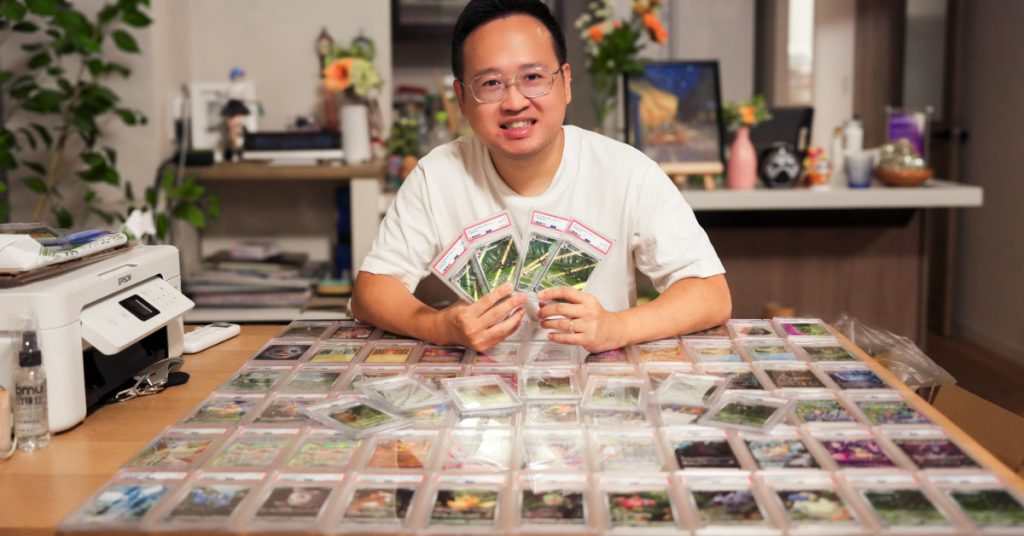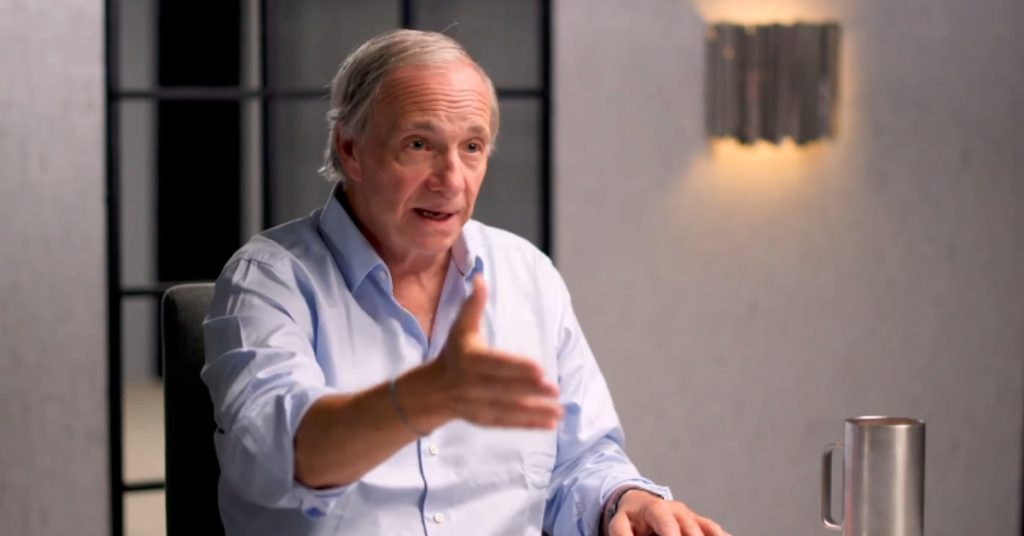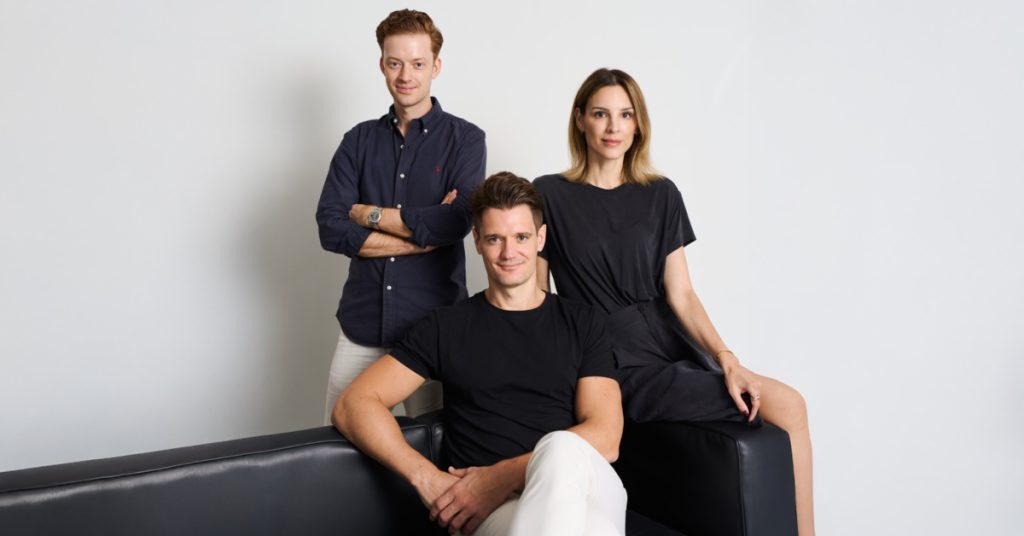They say that discovering oneself is the key to realising one’s full potential. Growing up, Malaysian fashion designer Jeffery Goh struggled with finding his own identity. At an early age, he viewed himself as being different and was frequently bullied as a result.
Art was his means of expression. “Designing was an escape for me as I get to unleash my creativity and fantasies in my designs,” the artist said.
Now, he’s able to do that full-time after creating his own line of batik apparel called inisaya, which means ‘this is me’ in Malay.

Making a name for himself
After graduation, Jeffery set out on his journey to find his place in the world of fashion. Working with other fashion designers was his way of gaining the necessary industry exposure.
When he knew he had greater potential to start a business based on his creativity, Jeffery quit his day job to do so.
The aspiring designer thought he could create custom wedding and evening gowns. But when the pandemic struck, he realised it was not an ideal plan moving forward, considering how many weddings were indefinitely postponed following COVID-19 SOPs.
Instead, Jeffery saw his chance to challenge the menswear category for batik in Malaysia when he noticed that there was a severe lack of fashionable batik clothing for men on the market.
“Most batik clothing for men are just the plain shirts with normal buttons,” he noted, and thought to himself, “I would really like to introduce Malaysian culture in more fun, variant colours and modern styles or ways, but still not stray too far from the silhouettes and cutting of our traditional clothing.”
As clothing alterations became commonplace, Jeffery wanted to include them in his services too. Therefore, for a better fit, people who buy inisaya apparel can expect complimentary alterations and customisations.
Offering the greatest possible value
Jeffery explained that each piece of clothing is made by hand. “By placing the patterns in the most effective and pretty way to show off the prints, each batik piece we produce is special in its own way,” he affirmed.
To make the brand stand out even more, the designer stated that he only buys a certain amount of batik materials, and once the materials have been used up, they will not repurchase the same prints, regardless of how well they sell.
“We want to ensure exclusivity for our customers through producing less, and it helps the environment too,” he said. “We try to reduce waste by producing smaller batches, more exclusive and limited pieces so that each piece is unique, and also use the scraps to make pouches, bags and masks.”

Jeffery believes that every brand and every designer has a market. There must be some qualities that attract the right group of people.
For inisaya, the sizing of its garments is designed for men who prefer oversized clothing and for women who prefer clothing that can be adjusted.
“We are trying to make sure our clothes fit all of our customers, and by doing that, we think of different ways to make versatile clothes,” explained the designer. “We don’t only cater to one niche group, but rather we try to be more inclusive of all shapes and sizes.”
I myself adore the Wira top. The oversized aspect provides me with lots of room and mystery to my overall appearance. Not only does it hide most of my insecurities, but it also creates stylish silhouettes that differ based on what you pair it with or how you accessorise.

The team at inisaya now typically creates between 20 and 30 pieces of each design, and sometimes even less, pointing to their intention to create exclusivity.
A small but passionate team
The cost of running his business is not only monetary, but also time. “Most designs need about a few hours to draft, cut, and sew,” Jeffery revealed. “When I was doing it alone, I managed to make 50+ pieces within a week, and that is without getting enough sleep.”
Currently, the person helping Jeffery in yielding more fabric goods is his production assistant, Ain, who joined the team to learn how the fashion industry operates.
Meanwhile, Audrey, Jeffery’s assistant, assists him in managing the social media accounts and does the majority of the styling for the shoots.
Customers would typically have to pre-order their clothes two to four weeks in advance. However, the team caters to rush orders for an extra fee. Those orders will be prioritised before attending to other orders.
But even with such a lengthy process, Jeffery told Vulcan Post that there are still many people who actually understand that and appreciate the craftsmanship that goes into each piece.

inisaya’s main challenge lies with production, which is expected to increase in the near future. Finding more people to join the team is also crucial to the company’s growth and long-term viability.
“Making a piece takes time, especially when you’re using batik/prints in general, as some designs require you to match the prints for it to look nicer,” the creator expressed. “Also due to the overwhelming orders and demands, it is quite tough to make a lot with a limited amount of manpower and time.”
Customarily, the scarcity of a product would lead most business owners to raise the price as demand grows. However, an increase in price would be contrary to Jeffery’s core values, as he wants his garments to be accessible to as many people as possible.

Instead, he would focus on increasing the productivity of the startup. His strategy requires pre-cutting the fabric pieces and outsourcing them to home tailors, single mothers, and anyone else interested in taking up the offer. He firmly believes that by doing so, the economy would be provided with more opportunities.
Jeffery hopes to find freelancers to take on some of the remaining responsibilities of inisaya’s operations, including social media marketing, inventory, logistics, customer service, and accounting, and to learn from them at the same time.
Valuable lessons that couldn’t be bought
One of the most valuable lessons Jeffery learnt was the importance of putting his heart and soul into crafting his artistic creations. He believes that his customers can sense the passion he has for what he does.
The entrepreneur also learnt that there is no ideal time to start a business; rather, it is more important to be able to seize opportunities as they arise.
“When I launched my first collection, I didn’t think much about it. I also figured that there’s no harm in trying as I have got nothing to lose either. If it doesn’t work out, at least I know I have tried.” he theorised. “Surprisingly, [the collection] was well received. From this, I garnered more confidence to make more designs!”
And so, he did, launching a total of four collections in less than a year. For this and other accomplishments with inisaya, he gratefully thanked his parents, friends, and team.

In the future, we can expect to see inisaya’s first brick and mortar outlet. The designer hinted that he intends to develop his own prints, which will not be limited to batik themes, but will also include other Malaysian-inspired prints.
Jeffery’s story is one that shows the result of putting your passion into your work. When it culminates in a good end product, there will be customers willing to pay a fitting price and wait for it to be completed.
Also Read: 5 ways this crypto platform simplifies the investment process for beginners & pros
Featured Image Credit: inisaya


